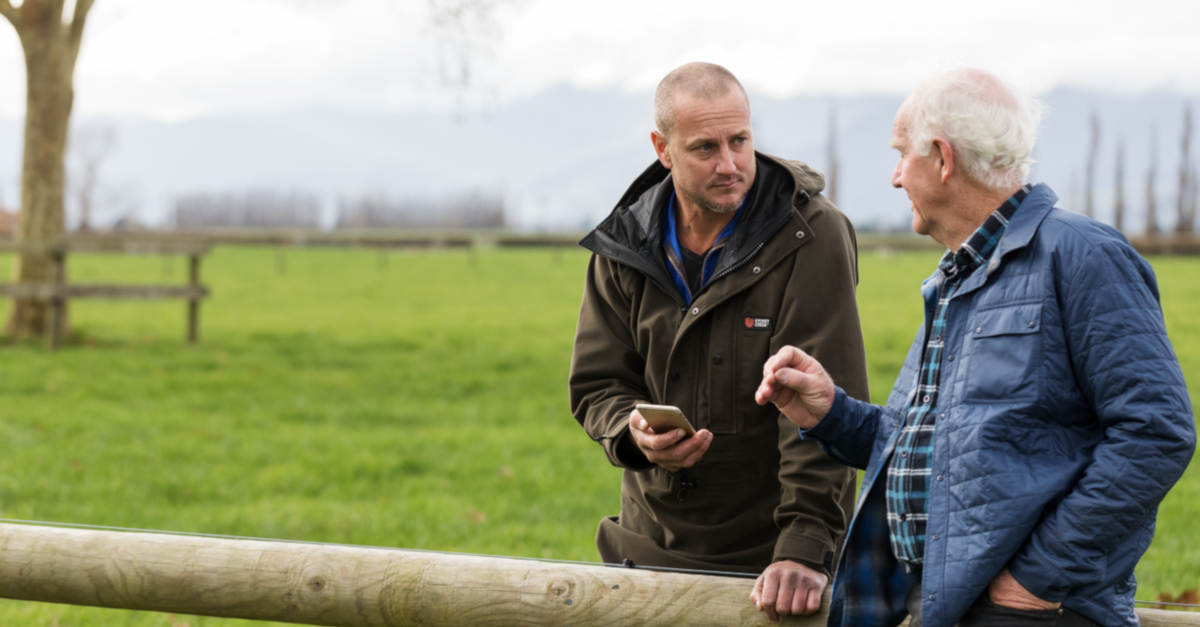Customer Empathy will be well-known to anyone who has heard about design thinking. So too, for that matter, anyone who has attended an Ag Innovations Bootcamp. Customer empathy is fundamental to creating great design that meets people’s needs. So how do you do it?
Empathy or sympathy?
Often “customer empathy” can sound a bit soft and “fluffy”; and rural professionals won’t want us to “empathise” with them, will they?
It’s easy for us to mistake empathy for sympathy. Both words involve understanding.
- Sympathy involves understanding emotional or physical hardships, and then offering comfort and assurance.
- Empathy builds personal understanding of what others are feeling, and the ability to put yourself “in their shoes”.
Embrace what you don’t know
Design practitioners we work with exhibit a similarity – they cultivate a “relentless curiosity”.
You’ve experienced this yourself, with someone who took a deep and genuine interest in your work or hobby. They listened attentively and asked thoughtful follow-up questions. They made you feel as though you were the most interesting person on earth!
Too often, when we venture into the field to talk to customers, we try to validate our own thoughts. We are the experts. We ask questions to qualify the customer, and to quantify the value that our solution will offer.
But what if our intended solution is not what the customer needs? What if there is an opportunity for something even better and more interesting?
Prepared questions will help you start a conversation. Deep listening and genuine curiosity will help us learn more than we could imagine.
Many beats one, and one beats many
How many customers do you need to interview? Will one or two be enough?
It would be nice to think so. Interviews take time to arrange. They take a lot of time and energy to carry out, and they often involve much travel. You can’t usually interview agricultural workers on a city street with a clipboard.
If you interview too few people, it can be hard to distinguish the important from the frustration of the hour. We know that diversity is an essential to high performing teams and great decisions. Seeking diverse views will also help you to create better products or services.
Plan for at least five interviews. You should find both commonality and the breadth of variation between your interviewees. If you’re finding great diversity (or your first interviews don’t fit your early adopter profile), you may need to find more.
If you need to interview that many, should you consider a focus group instead? Could you get a group of customers in a room or on a Skype call and make more progress?
We don’t recommend this.
Focus groups have a different dynamic to one-on-one discussions. They good for uncovering trends and areas of concern. Detailed insights into the jobs your customers are trying to do are less likely to surface.
Will all users share their experiences and frustrations in a focus group? You may only hear personal experiences from the extroverts. There’s also the risk of “group think”. People may agree with well-expressed comments from others, regardless of their personal experience.
Make the effort to interview customers as individuals, or at most in twos.
Go where they are
In our experience, there is some value in bringing farmers or rural professionals into a meeting room or board room. They are less prone to interruption, and you have more wall space for Post-It notes and diagrams.
Yet you miss seeing the actual environment where they work and will use your product or service. You may also miss the environmental influences that affect the tasks they are trying to do.
Being on the farm or in the customer’s work environment allows them to pick up equipment and show you how they use it. They can point and describe the flow of animals, the pressure of people and machines. You can observe the frustration of sunlight on displays.
Most important: when you bring an end user into the boardroom, they become an amateur designer. This might be valuable, but it also becomes easier to talk in general terms. You may map general processes and forget to delve into experience.
Go to where your customers and end users work. You’ll gain richer insights and higher fidelity than you ever could in the boardroom.

